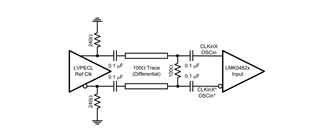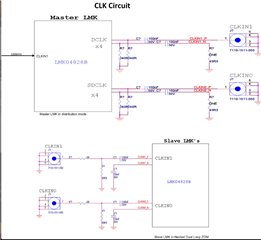Hi Timothy T / e2e.ti.com/.../4798065
We are also observing the same behaviour https://e2e.ti.com/support/clock-timing-group/clock-and-timing/f/clock-timing-forum/587468/lmk04828-phase-noise-vibration on DAC39J82EVM and our custom board.
We have seen this on Y1 and CLKOUT(DCLK6) of this board.
We are observing the same on our custom board on VCXO, LMK CLK OUTPUT and DAC Output.
VCXO Used: V7223T-100.0M & CVPD. In both of the VCXO we have observed. Does VC pin has a role in this issue?
We have tried changing the reducing the PLL1 PFD & Charge pump current gain and tried operating in PLL2 Mode, still we observe noise floor issue while in any vibration on board or near or due to FAN.
We would appreciate your suggestion.





